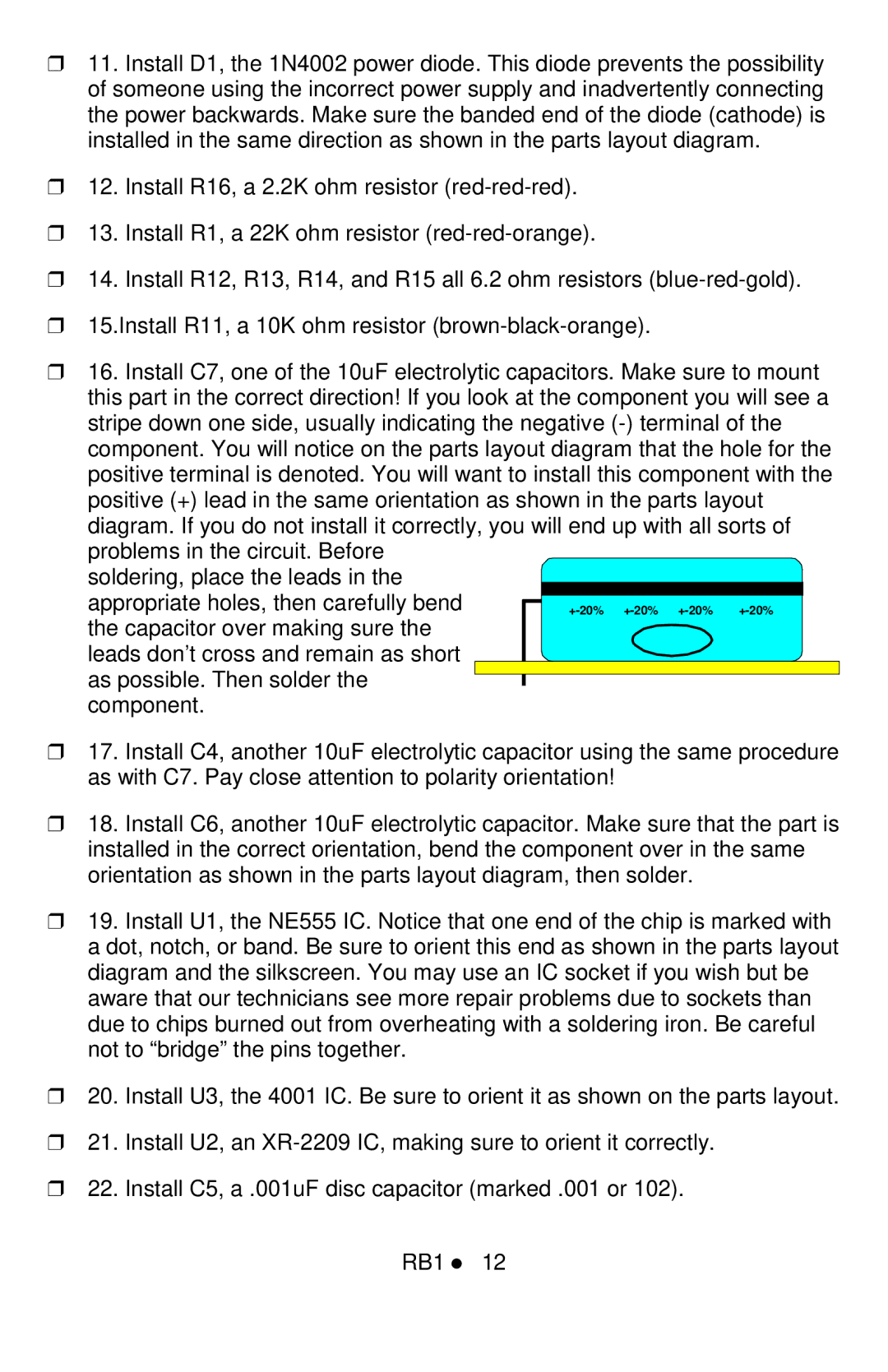
❒11. Install D1, the 1N4002 power diode. This diode prevents the possibility of someone using the incorrect power supply and inadvertently connecting the power backwards. Make sure the banded end of the diode (cathode) is installed in the same direction as shown in the parts layout diagram.
❒12. Install R16, a 2.2K ohm resistor
❒13. Install R1, a 22K ohm resistor
❒14. Install R12, R13, R14, and R15 all 6.2 ohm resistors
❒15.Install R11, a 10K ohm resistor
❒16. Install C7, one of the 10uF electrolytic capacitors. Make sure to mount this part in the correct direction! If you look at the component you will see a stripe down one side, usually indicating the negative
problems in the circuit. Before soldering, place the leads in the appropriate holes, then carefully bend the capacitor over making sure the leads don’t cross and remain as short as possible. Then solder the component.
❒17. Install C4, another 10uF electrolytic capacitor using the same procedure as with C7. Pay close attention to polarity orientation!
❒18. Install C6, another 10uF electrolytic capacitor. Make sure that the part is installed in the correct orientation, bend the component over in the same orientation as shown in the parts layout diagram, then solder.
❒19. Install U1, the NE555 IC. Notice that one end of the chip is marked with a dot, notch, or band. Be sure to orient this end as shown in the parts layout diagram and the silkscreen. You may use an IC socket if you wish but be aware that our technicians see more repair problems due to sockets than due to chips burned out from overheating with a soldering iron. Be careful not to “bridge” the pins together.
❒20. Install U3, the 4001 IC. Be sure to orient it as shown on the parts layout.
❒21. Install U2, an
❒22. Install C5, a .001uF disc capacitor (marked .001 or 102).
